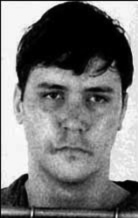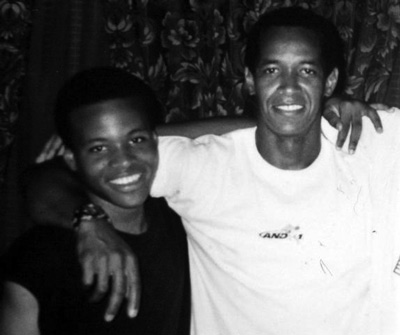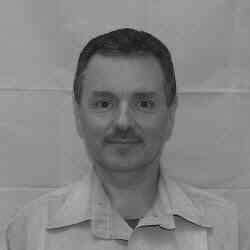Edmund Kemper
One of the astonishing serial killer stories to come out of the 1960’s and 1970’s of American Criminal History was Edmund Kemper. One of the earliest serial killers, Kemper suffered from paranoid schizophrenia and murdered his own mother as the culmination of a string of intensive and fatal attacks. Often posing as a police officer, Kemper picked up women looking for a ride who were too young and inexperienced to turn him down.
Kemper’s story was a strange one, with traditional serial killer colorations of maternal domination and later serial murders. But the first killings of Edmund Kemper were his own grandparents when he was just 15. This hardly matches the later modus operandi of young female students he murdered later. The initial married couple and the intermittent coeds, then his mother and her friend, then a group of eight random victims represent the body of Kemper’s victim list.
Why did Edmund Kemper want to kill young women? Because it was the only way he felt he could connect to them and “own” them. But Kemper also had been marginalized from normal society early by his institutionalization. Possibly these were unconscious rehearsals for the killing of his mother that was his real aim all along. Once Kemper’s head cleared, perhaps he was done and was ready to meet with the consequences.
What association could he possibly have for the college age women? Unable to get into college himself, was Kemper killing genders “others” who had outpaced him academically? Kemper’s turbulent relationship with his mother underscores the link between her in his mind as a college employee and the co-ed girls he killed.
The Co-Ed killer was even more of a serial killer than his official record reflects. Kemper murdered his grandparents when he was fourteen, and as soon as he could get his slate wiped clean and the record expunged he went out and got a gun. The immediate killing spree to follow took eight lives. Kemper even murdered his own mother and then a family friend.
But it was the classic serial killer mentality that drove Edmund Kemper. Mental disease, psychological instability, early (albeit self-caused) bereavement and unsteady emotional influences formed a character seriously deficient in basic humanity. His eagerness to kill and rob other humans of life resulted in multiple innocent, violent, senseless deaths.
Kemper did not begin with co-eds or young women. He killed his grandmother and grandfather when he was 14 because it occurred to him to do so. His record was sealed but attempted more murders when he was released from his asylum commitment. Kemper promptly began killing again once the fantasy had taken hold. Kemper was assessed at almost a genius I.Q.
Serial killers usually groom an idea or concept of their killings in the mind before performing them. Possibly Kemper had fantasies while spending his adolescence in the psychiatric facility at Atascadero, but if so why did the focus remain both maternally based and targeting young women? Kemper formed no relationship or affiliation and did menial jobs.
Was Kemper projecting his murderous feelings onto young women who might have been sexual partners if his upbringing had been less scarring, or was he trying to remotely activate murderous feelings upon a substitute for his mother? Kemper’s mother worked at a local college.
Born in California in 1948, Kemper came of age in an era when neither drugs nor medical knowledge to deal with his disorder except with commitment. Kemper was dissatisfied with his childhood and early life and had few skills or resources to eradicate years of emotional abuse. Once his mother was out of the way, a few more murders happened and the smoke cleared. Kemper’s teleological journey was complete and he called police to pick him up.
Kemper’s childhood was spent in feelings of inadequacy fueled by isolation and paranoia. Kemper’s two sisters used him as a doll like playthings which reinforced his feelings of early powerlessness, coupled with domination by his mother, this crystallized into a forceful emotional antipathy toward women. Kemper may have exercised a suppressed aggression against young women or women in general. Kemper may have viewed women as power figures which his killings served to transfer control of to him.
Kemper’s adolescent early disturbed behavior landed him in Atascadero, and when he was released he was 21 years old. Against the wishes of his doctors Kemper was released into the custody of his mother, a historical trigger to his psychological unease. Kemper was almost seven feet tall by this time, but his mother’s attitude dwarfed him into a doll sized ego. Kemper had little to no professional skills and no visible means of support.
Kemper had killed a family cat and beheaded it, and eviscerated his sister’s dolls in childhood. But his graduation to real human killing would happen in young adulthood. Hanging around a bar where policemen hung out, Kemper learned to imitate their mien and adopt their lingo. Kemper claimed in testimony to be compelled to kill the coeds, but may not have understood his own reasoning for doing so.
Rejected (ironically) for law enforcement for his size, Kemper was marginalized to near-freak status by looks alone. But Edmund Kemper would have been screened out by the psychological tests before attaining active patrol duty, a fact nobody pointed out to him. Dubbed the “Gentle Giant” by the media, Kemper’s string of murders fizzled out almost as if after killing his mother the rage slowly cycled out of him with the few subsequent killings.
By 1972, Kemper had moved out of his mother’s house into an apartment in Alameda. Kemper used a car to cruise the streets and pick up young female college students from the nearby campuses. His killing spree resulted from a desire to become a police officer and Kemper utilized his car and a fake police badge to intimidate and secure coed passengers on their last dark ride. Kemper was able to purchase a gun in his own name and use it against about eight women before he turned his attention to his real target.
By 1973, Kemper had moved back in with his mother. The pattern of removing coeds form their daily rounds and giving the “rides home” continued. This toxic resumption of a corrosive relationship had a predictable result: Kemper finalized his killing machine on his mother but didn’t stop there. Years of resentment festering without an escape valve left Kemper a senseless repetition of killing mania waiting to happen.
Kemper’s final murders flowed with a strange sense of emotional remove and black comedy. He trailed into another state and then had to convince local police regarding his identity. But Kemper had toyed with hiding bodies and even buried a woman victim facing his mother’s bedroom so she could “look up” to her.
Nothing illustrates Kemper’s necrophilia and mania for killing like his matricide. Kemper’s hatred of his mother and antisocial behavior was almost iconic. He decapitated his mother with a clawhammer and beheaded the corpse, then performed a sexual act upon the head. Kemper then killed one of her friends as well. Kemper’s ugly streak and postkilling practices were at their worst with his mother’s corpse.
Kemper then tried to dispose of her vocal cords in the garbage disposal. “That seemed appropriate,” Kemper noted after his arrest, “as much as she’d bitched and screamed and yelled at me over so many years”. Many of the co-ed sexual assaults and murders could be viewed as rehearsals for his matricidal act. The sexual activity with the corpses almost encapsulated a romantic love for death fused with the death of the female “other”. Since Kemper would associate all women with the most dominant one in his life, perhaps all of his murders were vicarious experiences of the murder of his mother he dreamed about.
Kemper flirted with various drop off spots for his pickup victims and left notes for police when he had killed his mother. But when he was finally brought into custody there was no redemption or rehabilitation possible. The childhood pyromaniac who tortured animals and killed his grandparents was incarcerated despite his insanity plea at Vacaville, California. In all Kemper – The Co-ed Killer – killed 10 people between 1964 and 1973.
Article by Roy Whyte . Visit his Google+ page for more.






